Perched upon a rocky hill that gazes over the bustling town of Khammam, the Khammam Fort stands like a guardian of stories. Every stone whispers of warriors, kings, poets, and pilgrims who once walked its corridors. For travelers seeking a journey through Telangana’s living history, this fort is not merely a monument, it’s an open-air museum carved by time.
In this guide, we’ll journey through the fort’s glorious past, its architectural charm, the myths that cling to its walls, and the modern-day efforts that keep it alive. Whether you’re planning a weekend getaway or tracing your roots through Telangana’s heritage, Khammam Fort promises to blend adventure with reverence.
Khammam Fort Tourism
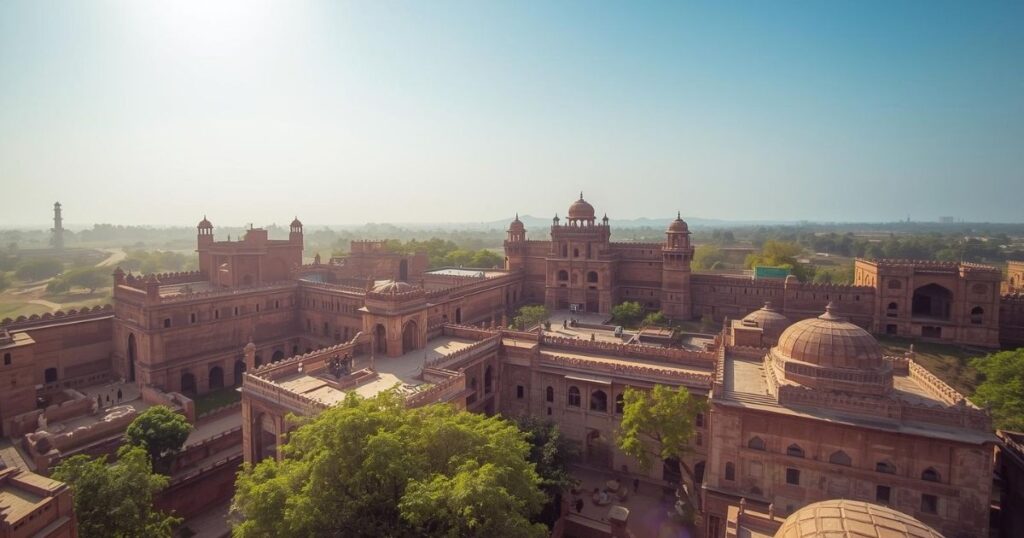
Nestled in the heart of Khammam district, this fort is one of Telangana’s most captivating heritage sites. Its 1,000-year history, breathtaking views of the Munneru River, and cultural depth make it a magnet for tourists.
Visitors can experience an enriching blend of Telangana heritage, religious diversity, and scenic beauty all within the same walls. Sunrise paints the ramparts golden, and by dusk, the fort glows in a mystical amber hue that photographers dream of capturing.
If you’re charting a trail of ancient forts in Telangana, Khammam Fort deserves to be near the top of your list, an ideal stop for history buffs and casual travelers alike.
Historical Background of Khammam Fort

The saga of Khammam Fort begins in the 10th century AD, during the reign of the Kakatiya dynasty. Renowned for their artistic vision and military acumen, the Kakatiyas laid its foundation using massive granite stones sourced from the surrounding hills.
Over the centuries, several dynasties left their mark. The Musunuri Nayaks fortified its ramparts; the Qutb Shahi rulers added elegant mosques and arches; and the Asaf Jahi (Nizam) dynasty reinforced the bastions with modern defenses.
Every ruling power added a new layer of architecture, turning the fort into a living timeline of Telangana’s evolution from Hindu kingdoms to Islamic sultanates and beyond.
Architectural Splendor of Khammam Fort
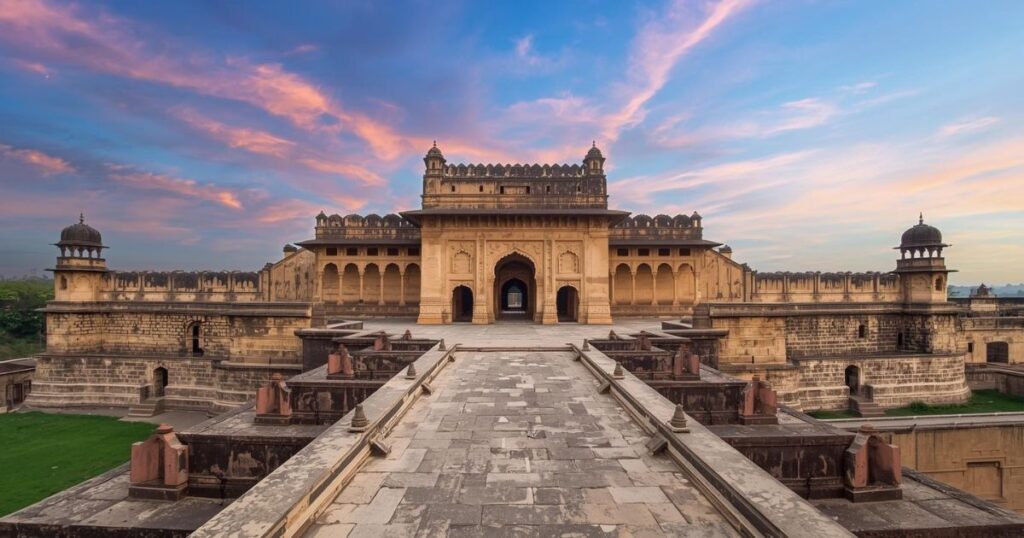
Sprawling across nearly 4 square kilometers, the Khammam Fort architecture reveals an extraordinary mix of styles. The Khilla Darwaza, its grand main entrance, greets visitors with intricate carvings, floral motifs, mythic beasts, and sacred symbols etched with astonishing precision.
Inside, one encounters temples, mosques, palaces, wells, and secret passages, each narrating a unique story. The fort’s stone walls are interlocked without mortar and engineering marvels that have endured centuries of monsoon and war.
Walk through the Narasimha Swamy Temple, carved elegantly within the fort complex, and you’ll feel the devotional pulse of ancient artisans. A few steps away, the Taramati Mosque, with its slender minarets and arched domes, speaks of spiritual harmony and cross-cultural artistry.
Architecturally, Khammam Fort embodies Telangana’s philosophy of coexistenceHindu craftsmanship meets Persian design under one sun-baked sky.
Read Aslo:Gangavaram Beach is a Beautiful Place to Visit in Vizag
Significant Structures Inside Khammam Fort
1. Narasimha Swamy Temple
A spiritual gem within the fort, this temple is dedicated to Lord Narasimha. Its stone pillars echo chants from centuries past, and its serene surroundings offer a moment of stillness amidst historic grandeur. Devotees believe the deity guards the fort from evil energies.
2. Taramati Mosque
Built during the Qutb Shahi era, the Taramati Mosque stands as an emblem of Islamic elegance. The central dome rises gracefully above twin minarets, and the prayer hall is adorned with delicate stucco art. Even today, it remains a place of peace and introspection.
3. View Points and Bastions
From the fort’s highest bastion, one can witness a sweeping panorama of Khammam town and the glistening Munneru River. As twilight falls, the city lights shimmer like scattered jewelsa sight every visitor should witness.
Myths and Traditions of Khammam Fort
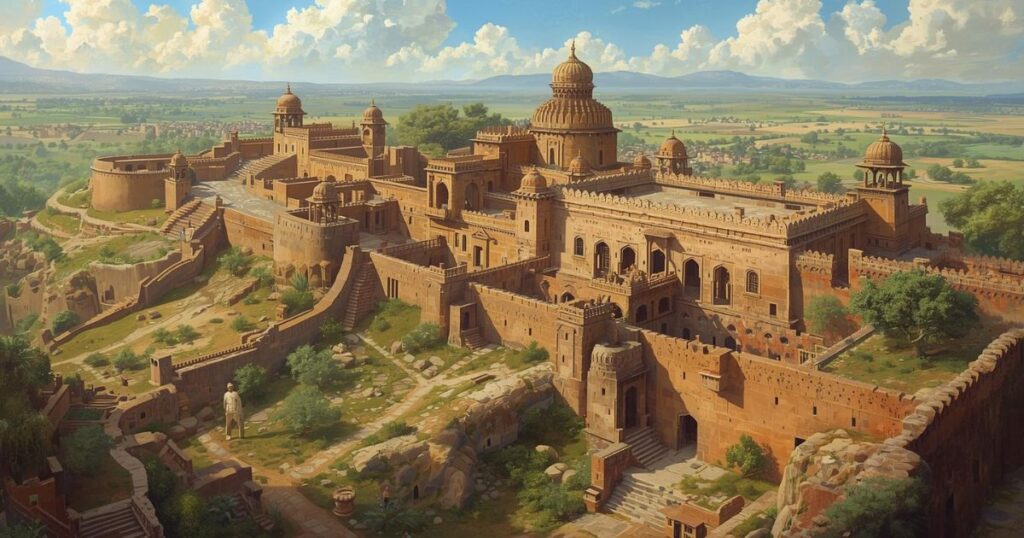
Legend wraps around Khammam Fort like the mist of early morning. Locals tell tales of a secret underground tunnel believed to stretch all the way to the Krishna River, offering royal escape routes during sieges.
Another enduring myth speaks of hidden treasures buried beneath the ramparts gold coins from the Qutb Shahi era still waiting to be discovered. While historians treat these as folklore, such stories keep the fort alive in imagination and local lore.
During festivals like Bonalu and Dussehra, processions ascend the fort carrying colorful banners and sacred offerings, merging ancient devotion with community joy. The fort transforms into a vibrant canvas of Telangana’s traditions.
Cultural Significance of Khammam Fort
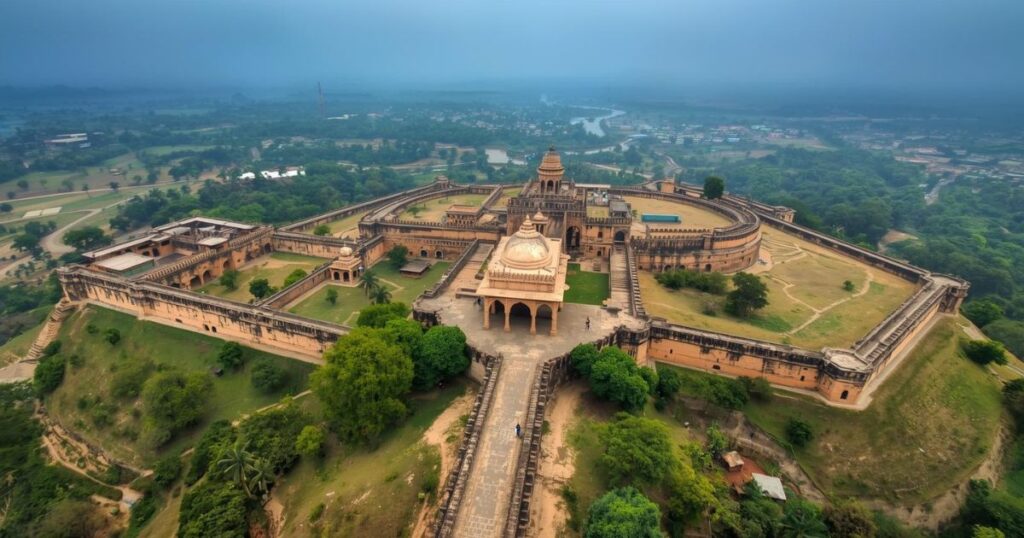
Beyond its stones and walls, Khammam Fort represents Telangana’s enduring spirit of inclusivity. Hindus, Muslims, and visitors of all faiths find something that resonates herea rare space where cultural harmony was etched in architecture long before it became a social ideal.
Today, the fort hosts heritage walks, school excursions, and cultural events, drawing history lovers and photographers from across the state. It’s a bridge between eras: medieval echoes meeting the hum of modern life.
Preservation Efforts
Recognizing the fort’s immense value, the Telangana Tourism Department and local heritage groups have initiated restoration programs. Conservationists have strengthened the walls, cleaned overgrown pathways, and installed interpretive boards for visitors.
Efforts also focus on promoting Khammam Fort tourism through digital campaigns, guided tours, and night illuminations that showcase its majestic contours under moonlight.
Every conservation act here is a salute to Telangana’s legacy ensuring that future generations can walk the same paths their ancestors once guarded.
Visitor Information
- Location: Khammam town, Telangana State, approximately 200 km from Hyderabad.
- Entry Fee: Generally free; minimal charges may apply for guided tours.
- Timings: Open daily from 9 AM to 5 PM (ideal for early morning or sunset visits).
- Best Time to Visit Khammam Fort: November to February, when the climate is cool and pleasant.
- Nearest Railway Station: Khammam Railway Station (about 3 km away).
- Local Transport: Auto-rickshaws and shared cabs are readily available.
- Travel Tips:
- Carry water; the climb can be steep.
- Wear comfortable footwear.
- Visit during weekdays for a quieter experience.
- Don’t miss the viewpoint near the northern bastion for sunset shots.
- Carry water; the climb can be steep.
Famous Forts to Visit in Telangana
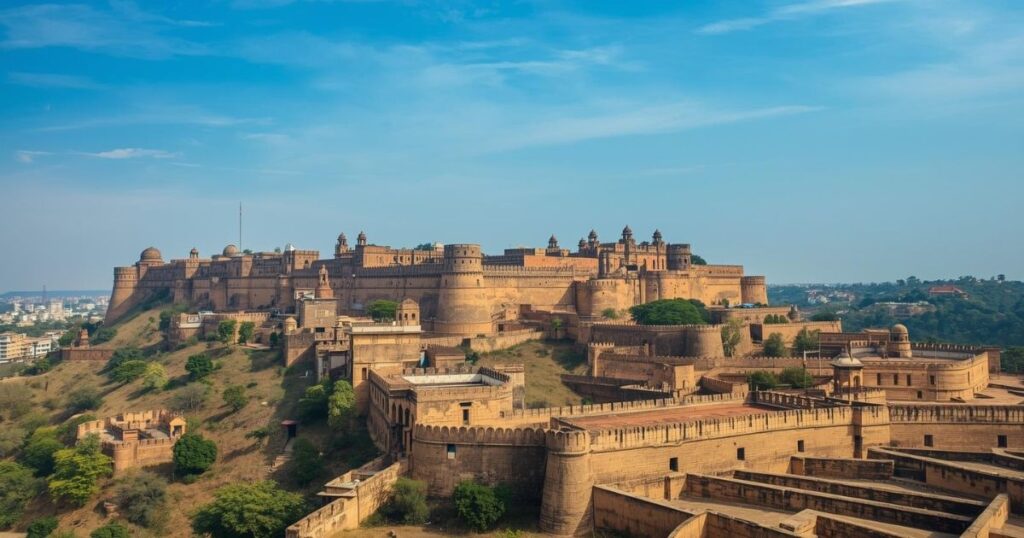
If Khammam Fort ignites your love for history, Telangana offers a treasure map of forts to explore:
- Bhongir Fort: A monolithic marvel near Hyderabad, famous for its 360° hilltop views.
- Golconda Fort: The crown jewel of Telangana’s architecture, echoing with royal tales.
- Warangal Fort: Once the capital of the Kakatiya Empire, adorned with grand gateways and stone inscriptions.
- Elgandal Fort: An underrated gem near Karimnagar with scenic riverside vistas.
Each fort carries a distinct story together, they compose Telangana’s proud architectural anthem.
Explore 2 Other Historical Places to Visit in Khammam
- Sri Venkateswara Swamy Temple, Jamalapuram
Known as the “Telangana Tirupati,” this temple rests amid green hills, drawing pilgrims seeking divine peace. - Lakaram Lake Park
A serene urban escape perfect for evening boat rides, family picnics, and street-food indulgence.
Pair these with Khammam Fort for a balanced itinerary of spirituality, history, and relaxation.
Other Places to Visit in Telangana
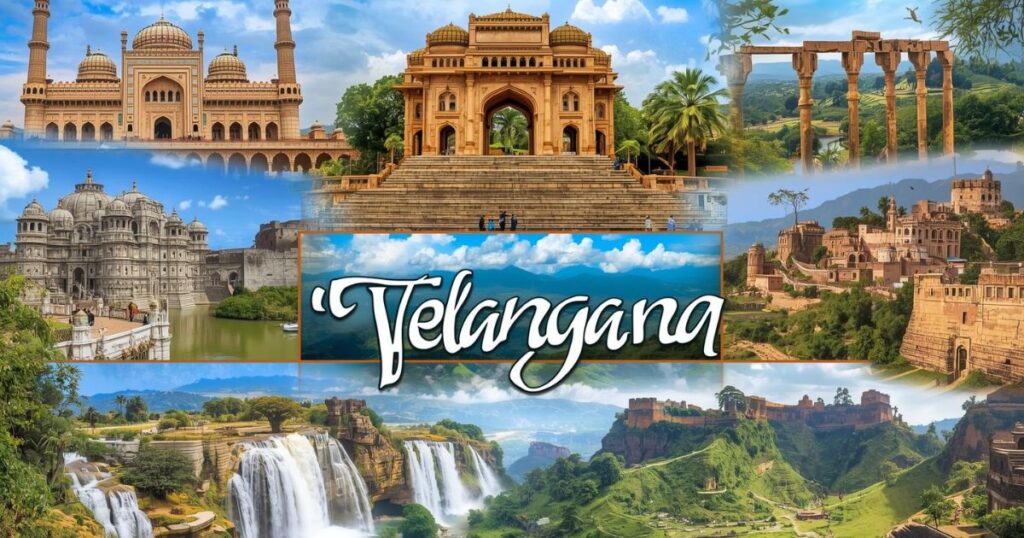
Telangana brims with cultural wonders:
- Ramagiri Fort, Peddapalli – A fort that kisses the clouds.
- Medak Cathedral and Fort – Blending European grandeur with Deccan resilience.
- Kothakonda Fort – Famous for its jatara (fair) celebrating Lord Veerabhadra.
- Pillalamarri Banyan Tree, Mahabubnagar – A 700-year-old natural marvel.
Exploring these destinations reveals how Telangana’s landscapes cradle history at every turn.
The Greatness of Telugu Culture
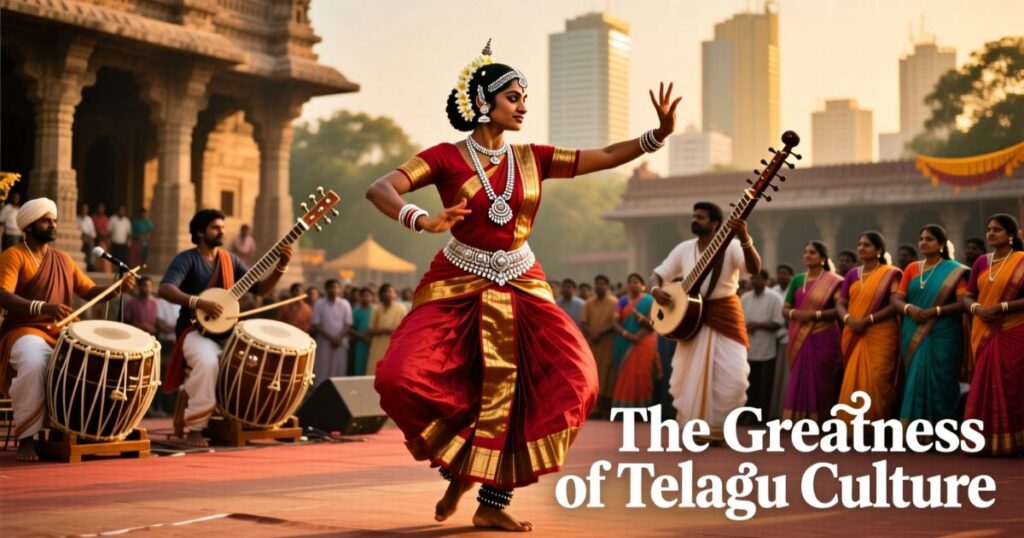
From its forts and folk songs to its cuisine and classical dance, Telugu culture thrives on diversity and artistry. Khammam Fort, like many ancient sites, stands as a stone-carved testimony to this greatness where faith, architecture, and artistry coexist gracefully.
Every festival, carving, and melody from Telangana tells the same story: a civilization that has always balanced valor with beauty.
FAQs
Where is Khammam Fort located?
Khammam Fort is situated in Khammam town, Telangana, about 200 km from Hyderabad.
When was Khammam Fort built?
It was initially constructed around 950 AD by the Kakatiya rulers and expanded by later dynasties.
What is special about Khammam Fort’s architecture?
The fort displays a rare fusion of Hindu and Islamic styles, featuring temples, mosques, and grand gateways like the Khilla Darwaza.
What are the timings and entry fees for Khammam Fort?
It’s open from 9 AM to 5 PM daily, with nominal or no entry fee for visitors.
What is the best time to visit Khammam Fort?
The winter months (November to February) are ideal for pleasant weather and clear views.
How can I reach Khammam Fort?
Visitors can travel by road or train to Khammam Railway Station and hire local transport to the fort.
What are the things to do at Khammam Fort?
Explore its temples, mosques, and viewpoints; join heritage walks; and capture sunset photographs over the Munneru River.
Conclusion
The Khammam Fort is not merely an old stronghold, it’s a chronicle of Telangana’s soul. As you wander its timeworn paths, you’re walking through a millennium of dreams, dynasties, and devotion.Whether you come as a traveler, a photographer, or a seeker of stories, the fort rewards you with a sense of connection between past and present, stone and spirit, history and heart.

